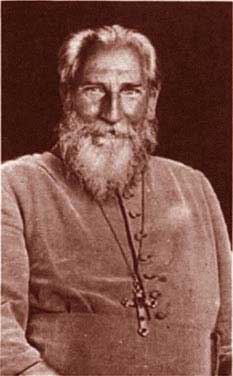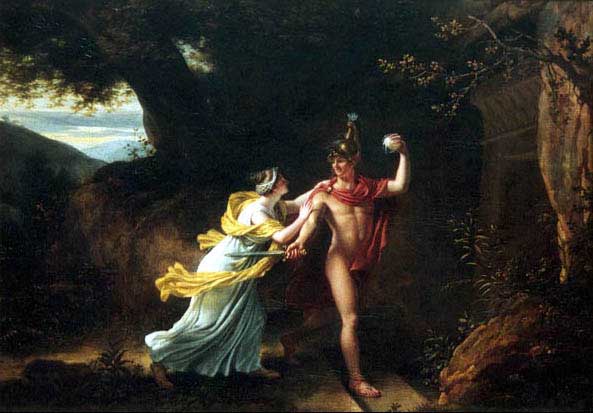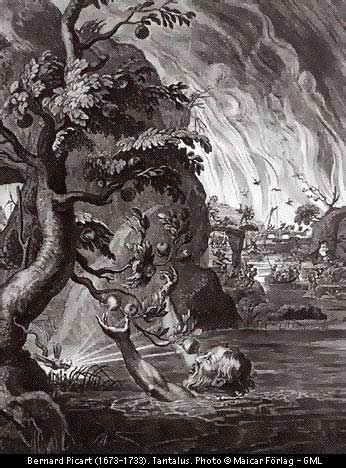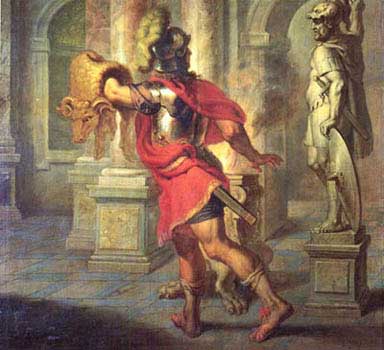Charles W. Leadbeater
The Ancient Mysteries
From: The Inner Life
Section One, pp. 51 -63.
by Charles W. LeadbeaterWhat I can tell you with regard to the ancient mysteries is not derived from any special study of old manuscripts, or of the history of this subject. It happened to me in another life to be born in ancient Greece, and to become initiated there into some of the mysteries. Now a man who was initiated in this way in Greece gave a pledge not to reveal what he had seen, and this pledge is binding, even though it was given in a former incarnation; but Those who stood behind those mysteries have since thought fit to give out to the world much of what was then taught only under the vow of secrecy, and so They have relieved us from our promise as far as those teachings go. Therefore I break no pledge when I tell you something about the instructions which were given in those ancient mysteries. Other subjects were taught, however, which I am not at liberty to name, because they have not yet been made public by the Great Ones.
In the first place, I should like to ask you to notice that all peoples and all religions have had their mysteries, including the Christian religion. I have often heard people say that in the Christian religion, at least, nothing was hidden: that everything was open for the study of the poor and the unlearned. Any one who says that does not know the history of the Christian Church. Now, indeed, everything the Church knows is given out, but that is only because it has forgotten the mysteries which it used to keep hidden. If you study the earliest history of the Church, you will find that old writers speak very distinctly of the mysteries, which were taught only to those who were full members of the Church.
There were many points on which nothing was said to those who were only “katechoumenoi,” who had just entered the Church, but were still candidates for full membership.
Traces of this we can find still earlier, for you will remember that it is said in the Gospels that the Christ made known to His disciples many things which He gave to the multitude only in parables.
But one of the reasons of the failure of the Christian Church to control her more intellectual sons, as she should have done, is the fact that she has forgotten and lost the supernatural and philosophical mysteries which were the basis of her dogma. To see something of this hidden side of her teachings you have only to read the works of the great Gnostic writers. Then you will find that when we take this side as the inner doctrine for the scholars, and the present form of the Christian religion as the outer doctrine for the illiterate, we get in the two combined a perfect expression of the ancient Wisdom. But to take either of these teachings by itself, and to condemn the other as heresy, gives us only a one-sided view. So every religion has instruction for those who do not get beyond its outer form, but has always also higher instruction for those who penetrate to the inner.
However, when we speak of the ancient mysteries, we generally mean those which were connected with the great religion of ancient Greece. Only a few books exist on this subject. There is a book of Iamblichus, who was himself initiated into the mysteries, and there is a book written by a countryman of mine, Thomas Taylor, a Platonist, and also one by a Frenchman, Monsieur P. Foucart. Although they are very interesting, you will find that they give but little real information. Much that we think we know about the mysteries (I mean from an external point of view) comes to us through the writings of their exponents.
The Christian Church has had the habit — probably justifiable from her point of view — of destroying all books which stood for teachings other than her own, and we must not forget that almost all of our knowledge with regard to early Christian times comes to us through the hands of the monks of the middle ages. They were practically the only educated people of that time, and it was they who copied all the manuscripts. They had very pronounced opinions about what was useful and what was not; so very naturally only that part survived which agreed with their views, this being reported with emphasis, while anything of opposite character was discarded. Above all, the greater part of the knowledge which is accessible to the general world about the mysteries is found in the works of the Church Fathers, who were opposed to them. Without wishing to accuse the Fathers of having purposely misrepresented, we may certainly conclude that they tried to put forward their own view in the best and strongest light. Even at the present day if you wished to know the whole truth concerning the doctrine of some Protestant sect, you would not go to Catholic priests for information; nor, if you wanted good and just explanations concerning Catholicism, would you go to the Salvation Army to get them.
In regard to the mysteries we are in a similar situation, only much worse, because of the many and bitter disputes between the followers of the old religion and its mysteries and the Fathers of the Christian Church. Therefore we may accept only with considerable reserve and with great prudence what the Fathers say in regard to this subject. For example, you will find that they often maintain that the ancient mysteries contain much that is indecent and immoral.
Because I have carefully searched clairvoyantly through the mysteries of Greece, and in a former incarnation was myself an initiate of them, I can say with perfect certainty that there is not even a shadow of truth in those statements. There did exist certain mysteries with which were festivities and a form of Bacchus-worship, which degenerated later on into something very objectionable; but this was only in later times, and those mysteries belonged to quite another branch. They were not in the least related to the mysteries of Eleusis, but were only an imitation of them on a small scale, entirely exoteric.
I have, this evening, to treat a very extensive subject in a short time. I must try to give you a rough sketch of what those Greek mysteries were and what was taught to the initiates.
The fact will be known to you that two divisions are always mentioned: the lesser and the greater mysteries. Everybody knew that those existed, and the number of persons who were initiated was indeed quite a large proportion of the whole population. I think you may read in exoteric books of thirty thousand initiates gathering at one time, and this also shows that the fact that a man was initiated need not be kept secret, but that the outer world knew him as belonging to this numerous class. I mean that, although certain teachings given in the mysteries were always kept secret, the whole Greek and Roman world knew that the greater and lesser mysteries existed, and more or less who belonged to each of them.
But behind those two degrees, the existence of which was generally known, there were all the time the real secret mysteries; and the existence of the third degree, as one might call it, was unknown to the public. If one thinks of the conditions of that time one can readily understand the reason for this. Most of the Roman Emperors, for example, knew of the existence of the lesser and greater mysteries, and insisted upon being initiated. Now we know very well from history that many of the Roman Emperors were hardly of the character to be allowed to play a leading role in a religious body. But, all the same, it would have been very difficult for the leaders of the mysteries to refuse entrance to an Emperor of Rome. As was once said, one cannot argue with the master of thirty legions. The emperors would certainly have killed anyone who stood in the way of anything they wished. Thus it was desirable that the existence of the third degree should not be known, and nobody knew that there was such a degree before he was deemed, by those who could judge, worthy to be admitted to it.
The teachings of this third degree were never given to the public and never will be. But in the common mysteries, lesser and greater, are many things which can be told. In the first place, then, we were taught certain pithy sayings, or apophthegms, and if I quote you some of those you will understand the nature of the teaching. One of the best known was “Death is life, and life is death.” This shows us that the higher life on the other side of death was well known. Another saying was “He who seeks realities in this life shall also seek realities after death; and he who seeks unrealities in this life shall also seek unrealities after death.” A great principle of their teaching was that the soul had descended from the higher spheres to the material. The principles of reincarnation were also contained in their instruction. You will remember that this did not appear in the external doctrine of the religions either of Greece or of Rome-- that is to say, it was not taught publicly and in so many words-- but you will find that this idea of the descent of the soul into matter is imparted in classic mythology. You will remember the myth of Proserpina, who was carried to the under-world while picking the flower of the narcissus.
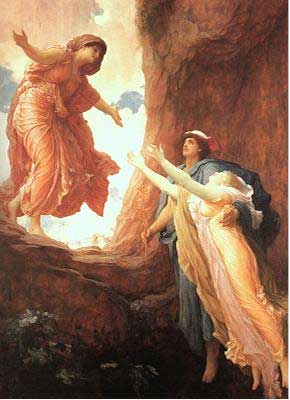
Return of Persephone. (Proserpina) by Leighton |
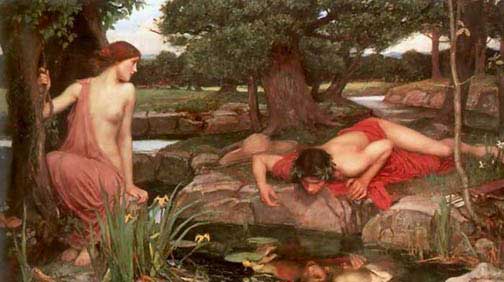 Echo and Narcissus by Waterhouse |
Let us recall the myth of Narcissus. He was a youth of great beauty who fell in love with his own image reflected in the water, and was therefore changed into a flower and bound to earth. You need not have studied much Theosophy to see what that means. We learn in The Secret Doctrine how the Ego looks down upon the waters of the astral plane and the lower world, how it reflects itself in the personality, how it identifies itself with the personality and, falling in love with its image, is bound to earth. So Proserpina, while picking the narcissus, is dragged away to the under-world, and afterwards passes half her life under the earth and half on the earth; that is, as you will see, half in a material body and half out of it.
In the same way, there are numbers of other myths of which it is very interesting to hear the Theosophical explanation. For example, in this old mystery-teaching the minotaur was held to signify the lower nature in man — the personality which is half man and half animal. This was eventually slain by Theseus, who typifies the higher self or the individuality, which has been gradually growing and gathering strength until at last it can wield the sword of its Divine Father, the Spirit. Guided through the labyrinth of illusion which constitutes these lower planes by the thread of occult knowledge given him by Ariadne (who represents intuition) the higher self is enabled to slay the lower, and to escape safely from the web of illusion; yet there still remains for him the danger that, developing intellectual pride, he may neglect intuition, even as Theseus neglected Ariadne, and so fail for this time to realize his highest possibilities.
Theseus, about to enter the Labyrinth to kill the Minotaur, holds Ariadne's thread in his hand. Source
In ancient Greece the lesser mysteries were especially celebrated in a little place called Agrae, and the initiates were called “mystae.” Perhaps you know that their official dress, the token of their dignity, was the skin of a fawn, which in the old symbology represented the astral body.
Its spotted appearance was thought to be emblematic of the many colors in an ordinary astral body. The reason why this was considered a fitting dress for those initiated into the lesser mysteries was because the principal teachings given in them concerned the astral plane. Those who were admitted learned what the astral life of man would be after death.
Much time was spent in making clear by example as well as by teaching what would be the effect in the astral world of a certain mode of life on earth. In the first place they taught by illustrations, on an extensive scale by representations in the temples, by a kind of play or drama in which was shown what, in the astral world, would be the condition of a man who had been, let us say, avaricious or full of sensual desires. In the old days of the mysteries, when the leaders were adepts or pupils of adepts, these representations were something like materializations. That is to say, the teacher, whoever he was, produced them by his own power out of astral or etheric matter, and created a real image for his pupils. But as time advanced, and later teachers were unable to bring about this phenomenon, they tried to represent these teachings in other ways — in some cases by what we should call acting. Members of the priesthood took the roles of different persons, while in other cases puppets were moved by machinery.
In addition to the teaching concerning the astral plane, instructions were also given in the same way as to the system of world-evolution. Among other things, pupils were taught how our solar system and its different parts came into existence. You can easily see how that could be represented, first by materialized nebulae and globes, and how, when this materialization was no longer possible, the arrangement of different globes could be made clear by the use of what we now call an orrery — that is, a model of the solar system.
One of the most important things connected with the mysteries was that they explained the outer religion of the people in quite another way than that given to the general public. If you know anything about the religion of ancient Greece, you will understand that there were many things which badly needed some inner explanation, for certainly their religion does not appear to be very elevated or very reasonable when looked at from the ordinary standpoint. It seems to have been the object that all the stories which made up the outer teaching, many of which seem very extraordinary, should be learned by the people and retained in their minds — just a few simple, clear conceptions, and nothing more. But all earnest minded people joined the mysteries, and learned there the real meaning of the stories, which gave the whole thing quite another aspect.
Let me give you an idea of what I mean, by two or three very simple and short examples. I told you that, for the most part, the aim of those lesser mysteries was to inform the pupils about the effects on the astral plane of a certain mode of life here on earth. You probably know the myth of Tantalus. He was a man condemned to suffer in hell eternal thirst, while water surrounded him on all sides, but receded from his lips as soon as he tried to drink. The meaning of this is not difficult to see, when once we know what the astral life is. Every one who leaves this world of ours full of sensual desires of any kind — as, for example, a drunkard, or some one who has given himself up to sensual living in the ordinary meaning of the word — such a man finds himself on the astral plane in the position of Tantalus.
He has built up for himself this terrible desire which governs his whole being. You know how powerful the desire can be in the case of a drunkard; it conquers his feelings of honor, his love of his family, and all the better inclinations of his character. He will take money from his wife and children, will even take their clothes to sell them and obtain money to drink.
Remember that when a man dies he does not change at all. His desire is still as powerful as ever. But it is impossible to gratify it, because his physical body, through which only he could drink, is gone. There you have your Tantalus, as you see, full of that terrible desire, always finding that the gratification recedes as soon as he thinks he has it.
Recall also the story of Tityus, the man who was tied to a rock, his liver being gnawed by vultures, and growing again as fast as it was eaten. There you have an illustration of the effect of yielding to desire: an image of the man who is always tortured by remorse for sins committed on earth.
As perhaps a higher example of the same we can take the story of Sisyphus. You know how he was condemned always to roll a stone up a hill, and how, when he reached the top, the stone would always roll down again. That is the condition of an ambitious man after death, a man who has spent his life in making plans for selfish ends, for attaining glory or honor. In his case also death brings no change. He goes on making plans just as he did during life. He works out his plans, he executes them, as he thinks, till the point of culmination, and then he suddenly perceives that he has no longer a physical body, and that all was but a dream. Then be begins again and again, till he has learned at last that these desires are useless and that ambition must be killed.
Sisyphus Pushing His Stone up a Mountain, 1731 by Bernard Picart
So Sisyphus goes on uselessly rolling the stone up the hill, till at last he learns not to roll it any more. To have learned that is to have conquered that desire, and he will come back in his next life without it; without the desire, but of course not without the weakness of character which made that desire possible.
So you see that conditions that seem terrible are but the effects in the other world of a wrong life here on earth. That is nature's method of turning wrong into good. Man does suffer, but what he suffers is only the effect of his own action and nothing else; it is not punishment inflicted upon him from outside, but entirely of his own making. And that is not all. The suffering he has to bear is the only means by which his qualities can be directed in the right way for his evolution and progress in another life. This was a point much emphasized in the teaching of the mysteries.
Now in regard to the greater mysteries. Those were celebrated principally in the great temple of Eleusis, not far from Athens. The initiates were named “epoptai,” that is, “they whose eyes are opened.” Their emblem was the golden fleece of Jason which is the symbol of the mind-body; for the yellow color in the human aura indicates the intelligence, as every clairvoyant knows.
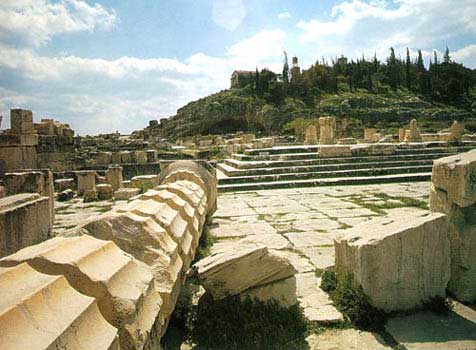
Eleusis |
|
In this degree of initiation the teachings of the former degree were continued. In the first, as you remember, were taught the effects in the astral world of various ways of living. In the greater mysteries the pupil was shown what would be the effect in the heaven-world of a certain line of life, study and aspiration on earth. The whole history of the evolution of the world and of man, in its deeper aspect, was expounded in the greater mysteries. The same method or representation as in the other case was used here; although it was much more difficult to represent on the physical plane what belonged to the mental.
In each of these divisions of the mysteries, the lesser and the greater, there was an inner school which taught practical development to those who were seen to be ready for it. In the lesser mysteries theoretical knowledge about the astral plane was given, but the teachers carefully watched their pupils, and when they noticed one of whose character they felt sure, who showed that he was capable of psychic development, they invited him into the inner circle in which instruction was given as to the method of using the astral body and consciously functioning in it. When such a man passed on to the greater mysteries he received not only the ordinary teaching about the conditions of the mental plane, but also private instruction as to the development of the mental body as a vehicle.
Those who were thus received, not only into the recognized stages of the mysteries but into their inner schools, were also taught at the end of their course that all of this was in truth but exoteric — that all which they had learned, incalculable as had been its value, was really only a preparation for the true mysteries of initiation which would lead them to the feet of the Masters of Wisdom, and admit them to the Great Brotherhood which rules the world.
I may explain still further the meaning of some of those symbols which were used in connection with the mysteries. First, we will take what was called the thyrsus — that is, a staff with a pine-cone on its top. In India the same symbol is found, but instead of the staff a stick of bamboo with seven knots is used. In some modifications of the mysteries, a hollow iron rod, said to contain fire, was used instead of the thyrsus. Here again it is not difficult for the student of occultism to see the meaning. The staff or the stick with seven knots represents the spinal cord, with its seven centers, of which we read in the Hindu books.
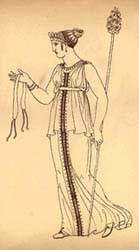
Thyrsus |
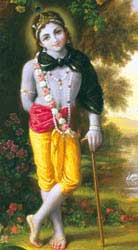
Krishna w/ bamboo danda |

Caduceus |
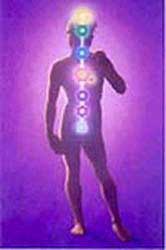
Chakras |
The hidden fire is the serpent-fire, kundalini, of which you may read in The Secret Doctrine. But the thyrsus was not only a symbol; it was also an object of practical use. It was a very strong magnetic instrument, used by initiates to free the astral body from the physical when they passed in full consciousness to this higher life. The priest who had magnetized it laid it against the spinal cord of the candidate and gave him in that way some of his own magnetism, to help him in that difficult life and in the efforts which lay before him. In connection with these mysteries, a certain set of objects called the toys of Bacchus are spoken of. When you go over those lists of the toys of Bacchus you will find them very remarkable.
Whilst the child Bacchus (the Logos) plays with his toys he is seized by the Titans and torn to pieces. Later these pieces are put together and built into a whole. You will understand that this, however clumsy it may seem to us, is without doubt an allegory, which represents the descending of the One to become the many, and the re-union of the many in the One, through suffering and sacrifice. What, then, are the toys of the child Bacchus when he falls into matter and becomes the many? In the first place we find him playing with dice. Those dice are not common dice, but the five platonic solids; a set of five regular figures, the only regular polygons possible in geometry. They are given in a fixed series, and this series agrees with the different planes of the solar system. Each of them indicates, not the form of the atoms of the different planes, but the lines along which the power works which surrounds those atoms. These polygons are the tetrahedron, the cube, the octohedron, the dodecahedron, and the icosahedron. If we put the point at one end and the sphere at the other we get a set of seven figures, corresponding to the number of planes of our solar system.
You know that in some of the older schools of philosophy it was said: “No one can enter who does not know mathematics.” What do you think is meant by that? Not what we now call mathematics, but the mathematics which embraced the knowledge of the higher planes, of their mutual relations and the way in which the whole is built by the will of God. Plato said, “God geometrizes,” and it is perfectly true. Those forms are not conceptions of the human brain; they are truths of the higher planes. We have formed the habit of studying the books of Euclid, but we study them now for themselves, and not as a guide to something higher. The old philosophers pondered upon them because they led to the understanding of the true science of life. We have lost sight of the true teaching, and grasp in many cases only the lifeless form.
Another toy with which Bacchus played was a top, the symbol of the whirling atom of which you will find a picture in Occult Chemistry.
"The atom has—as observed so far—three proper motions, i.e., motions of its own, independent of any imposed upon it from outside. It turns incessantly upon its own axis, spinning like a top; it describes a small circle with its axis, as though the axis of the spinning top moved in a small circle ... " from Occult Chemistry
He also plays with a ball which represents the earth, that particular part of the planetary chain to which the thought of the Logos is specially directed at the moment. Also he plays with a mirror. The mirror has always been a symbol of astral light, in which the archetypal ideas are reflected and then materialized*. So you see that each of those toys indicates an essential part in the evolution of a solar system.
A few words may be said about the way in which people were prepared for the study of those mysteries by the different schools; for instance, the Pythagorean school, to which I belonged. In the Pythagorean schools, the pupils were divided into three classes. The first was called that of the akoustikoi or hearers. This means that they were learners, but it is also true that one of the rules was that they were to keep absolutely silent for two years.
I think this rule would be regarded as a serious drawback by many who join our Society at the present time, but in those olden times a great many people, not only men but women too, submitted to this stipulation. The rule had also another meaning, but it is a fact that during two years the members of the first class were compelled to keep silence. The other meaning was that during all the time, however long, that a man stayed in this class of the akoustikoi, he might not give out any teaching, but continued to learn. I have wished that we had some such arrangement in the Theosophical Society, for it sometimes happens that members who do not yet know much themselves want to teach others, and the teaching is not always recognizable as Theosophy.
The second class of Pythagoreans was called that of the mathematikoi. They passed their time in studying geometry, numbers and music. They brought these different subjects into relation to one another and worked out the relations between color and sound, which are very remarkable.
Let us take an example, which shows how our world is a coherent whole and how we can take from different parts which do not seem to have any connection whatever, and bring them into relation with each other. I just spoke about the five platonic polygons. Every one who knows anything about music knows that there is a fixed proportion between the length of the strings which produce certain tones. You know that you can tune a piano according to a certain system of fifths, and you can express the relation of the different tones to one another by the number of vibrations of each tone; so you can express an harmonious chord in mathematical numbers. This was first discovered simply by experiment; later the mathematicians found out what the proportions should be, and again by experiment they were found to be exact. But the peculiarity is that the set of numbers which produces an harmonious chord have the same relation to one another as that which exists between certain parts of these platonic solids. I believe that this point was worked out some time ago in an article in the Theosophical Review by one of the English cathedral organists.
It is very remarkable that our scale, so different from the old Greek scale, which consisted of five tones, can still be deduced from the proportion of those five platonic figures, which were studied some thousands of years ago in Greece. One is apt to think that there cannot be much relation between mathematics and music, but you see that they are both parts of one great whole.
The third class of the Pythagorean school was formed of the physikoi — those who studied physics, the inner connection between phenomena, world-building and metaphysics. They learned the truth about man and nature and, as far as they could learn it, about Him who made both.
There is still one point in the mysteries which we should not forget to consider — the life of the disciples. A life of perfect purity was strictly required. It is a remarkable coincidence that the life in the Pythagorean school is divided into five periods, almost similar to the five steps of the preparatory path of the Hindus, as described by me in Invisible Helpers, and by Mrs. Besant in The Path of Discipleship. Almost all the forms and symbols of the present Christian religion are derived from the Egyptian mysteries. All the symbolism, for example, that is related to the Latin cross, and to the descent and sacrifice of the Logos, is taken from the Egyptian mysteries. I have written about this in The Christian Creed. Though the mysteries of Greece and Rome, of Egypt and Chaldaea, are long ago defunct, the world has never been left without avenues of approach to the inner shrine. Even in the gross darkness of the middle ages the Rosicrucians and some other secret societies were ready to teach the truth to those who were ready to learn; and now in these modern days of hurry and materialism the Theosophical Society still upholds the banner of true knowledge, and acts as a gateway by means of which those who are really in earnest may reach the feet of the Masters of the Wisdom. We have our grades in the Esoteric Section, just as the mysteries had; and behind us, as behind them, stand always the officials of the Great White Brotherhood, who keep in their hands the key to the true initiations.
You must also remember that many things given in those old days only under the seal of secrecy are now made public, and through our Society are given to the world. Many of the greatest and noblest characters of history have passed years in study and work to try to find what is now given us so easily and simply in a few books. Of us is perfectly true what is said in the Bible: “Many prophets and kings have desired to see those things which ye see, and have not seen them; and to hear those things which ye hear, and have not heard them.” (Luke, x. 24.) Because this honor is reserved for us and this opportunity is given us, it seems to me that a great responsibility rests upon us, and that we should try to be worthy of the gift. It is good karma which allows this possibility to open before us. If we let it pass, we shall not deserve to have another offered us for thousands of years. If you knew, as I know, with what difficulties we had to contend in former days to learn all those things which are laid before us now, perhaps you would appreciate more the opportunity offered you. Let us try to make use of it to the utmost of our power, and show ourselves worthy of the privilege given us by Theosophy.
* Archetypal ideas are patterns on the highest mental plane that serve as blueprints for the formation of the manifested world. Editor.
End of The Ancient Mysteries section.
C.W. Leadbeater's Account of the Development of His Clairvoyance
Excerpted from How Theosophy Came to Me
...When Colonel Olcott left us [in 1885] on his tour Adyar [headquarters of the Theosophical Society near Madras, India] remained empty; and unfortunately its treasury was in the same condition, so that the very few of us who remained had instructions to observe the strictest economy. Mr. Cooper-Oakley and I were for a long time the only Europeans; and as he lived up on the roof in one of the further rooms (later occupied by Dr. English) and I was in the Eastern octagon room, I saw almost nothing of him, except for a short morning visit of greeting each day. . . .
It should be understood that in those days I possessed no clairvoyant faculty, nor had I ever regarded myself as at all sensitive. I remember that I had a conviction that a man must be born with some psychic powers and with a sensitive body before he could do anything in the way of that kind of development, so that I had never thought of progress of that sort as possible for me in this incarnation, but had some hope that if I worked as well as I knew how in this life I might be born next time with vehicles more suitable to that particular line of advancement.
One day, however, when the Master Kuthumi honoured me with a visit, He asked me whether I had ever attempted a certain kind of meditation connected with the development of the mysterious power called kundalini. I had of course heard of that power, but knew very little about it, and at any rate supposed it to be absolutely out of reach for Western people. However, He recommended me to make a few efforts along certain lines, which He pledged me not to divulge to anyone else except with His direct authorization, and told me that He would Himself watch over those efforts to see that no danger should ensue.
Naturally I took the hint, and worked away steadily, and I think I may say intensely, at that particular kind of meditation day after day. I must admit that it was very hard work and sometimes distinctly painful, but of course I persevered, and in due course began to achieve the results that I had been led to expect. Certain channels had to be opened and certain partitions broken down; I was told that forty days was a fair estimate of the average time required if the effort was really energetic and persevering. I worked at it for forty-two days, and seemed to myself to be on the brink of the final victory, when the Master Himself intervened and performed the final act of breaking through which completed the process, and enabled me thereafter to use astral sight while still retaining full consciousness in the physical body—which is equivalent to saying that the astral consciousness and memory became continuous whether the physical body was awake or asleep. I was given to understand that my own effort would have enabled me to break through in twenty-four hours longer, but that the Master interfered because He wished to employ me at once in a certain piece of work.
It must not for a moment be supposed, however, that the attainment of this particular power was the end of the occult training. On the contrary, it proved to be only the beginning of a year of the hardest work that I have ever known. It will be understood that I lived there in the octagonal room by the river-side alone for many long hours every day, and practically secure from any interruption except at the meal-times which I have mentioned. Several Masters were so gracious as to visit me during that period and to offer me various hints; but it was the Master Djwal Kul who gave most of the necessary instruction. It may be that He was moved to this act of kindness because of my close association with Him in my last life, when I studied under Him in the Pythagorean school which He established in Athens, and even had the honour of managing it after His death. I know not how to thank Him for the enormous amount of care and trouble which He took in my psychic education; patiently and over and over again He would make a vivid thought-form, and say to me: “What do you see?” And when I described it to the best of my ability, would come again and again the comment: “No, no, you are not seeing true; you are not seeing all; dig deeper into yourself, use your mental vision as well as your astral; press just a little further, a little higher.”
This process often had to be many times repeated before my mentor was satisfied. The pupil has to be tested in all sorts of ways and under all conceivable conditions; indeed, towards the end of the tuition sportive nature-spirits are specially called in and ordered in every way possible to endeavour to confuse or mislead the seer. Unquestionably it is hard work, and the strain which it imposes is, I suppose, about as great as a human being can safely endure; but the result achieved is assuredly far more than worth while, for it leads directly up to the union of the lower and the higher self and produces an utter certainty of knowledge based upon experience which no future happenings can ever shake.
At Amazon.com:
Related link:
Ancient Landmarks: The Greek Mysteries, from the Theosophy Archives 1939
back to: Alternative Archaeology and History
back to: Varieties of Spiritual Thought
Main Page: Reverse Spins
